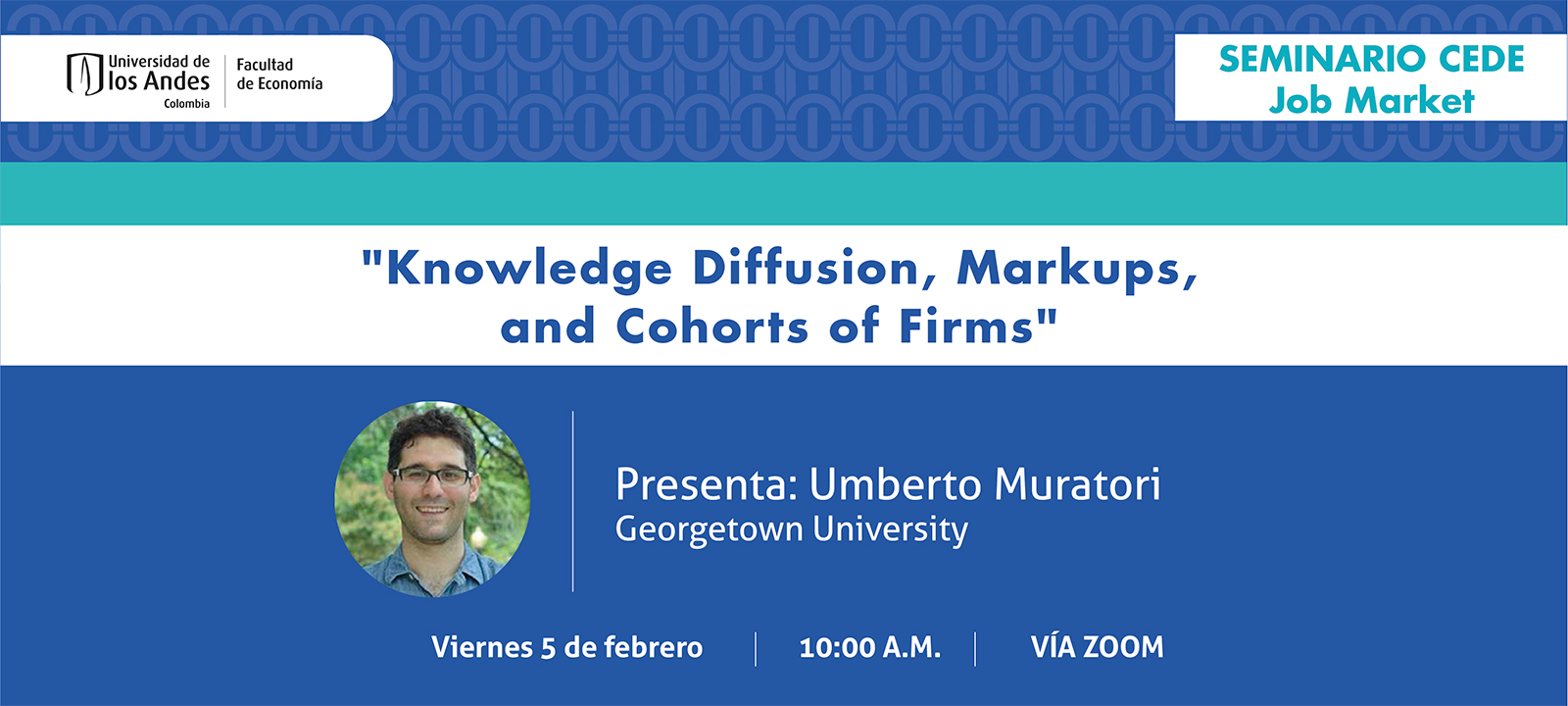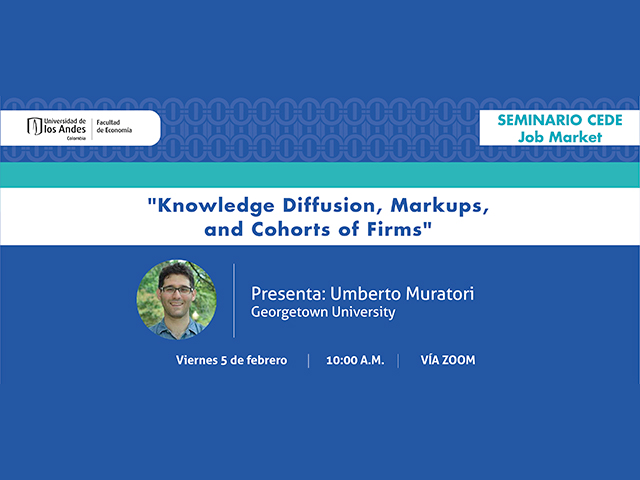Seminario CEDE - Umberto Muratori

This paper investigates the differences in markups between and within cohorts of US firms. I document substantial between-cohort differences and a relatively flat profile over time within cohorts. The paper uses administrative patent data to provide suggestive evidence that knowledge creation and diffusion explain these patterns. Namely, the between-cohorts pattern is associated with improvements in the innovation quality, and the within-cohort pattern is the result between the interaction of innovation and knowledge diffusion. Motivated by this new empirical evidence, I develop a general equilibrium endogenous growth model of creative destruction augmented with knowledge diffusion. I build the model for two purposes. First, I estimate the changes in the intensity of knowledge diffusion. I find knowledge diffuses 38% faster in 2010 than it did in 1980. Second, I quantify the effect of changes in the innovation step size and intensity of knowledge diffusion on growth and welfare. The quantitative exercises show the consumption-equivalent welfare increases by 0.29% if the innovation step size and intensity of knowledge diffusion increase from their 1980 to their 2010 values. By contrast, the counterfactual experiments highlight the increase in these parameters has no substantial effect on growth. Changes in the innovation quality and the speed of knowledge spillover can be achieved by reforming the patent system, such as changing the non-obviousness requirements or the patent term. The findings suggest policymakers, who aim to maximize the welfare, should choose short patent terms and low innovative-step requirements.

